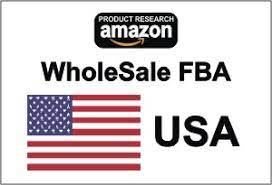In today’s digital age, the world of e-commerce has opened up a realm of possibilities for aspiring entrepreneurs. One avenue that has gained significant traction is the Amazon FBA (Fulfillment by Amazon) business model. Offering a streamlined and efficient way to sell products online, Amazon FBA has become a game-changer for individuals looking to establish a profitable online business. In this article, we will explore the fundamentals of the Amazon FBA business and how you can leverage its power to build a successful venture.
What is Amazon FBA?
Amazon FBA is a program offered by the e-commerce giant that allows sellers to store their products in Amazon’s fulfillment centers. When a customer places an order, Amazon takes care of the picking, packing, and shipping process on behalf of the seller. This hassle-free fulfillment solution enables sellers to focus on sourcing and marketing their products, while Amazon handles the logistics and customer service.
Why Choose Amazon FBA?
- Prime Eligibility: By utilizing Amazon FBA Business, your products automatically become eligible for Amazon Prime, which is a membership program that offers fast and free shipping to millions of customers. Prime eligibility increases the visibility and trustworthiness of your products, attracting a larger customer base.
- Warehousing and Logistics: Amazon’s vast network of fulfillment centers ensures that your inventory is stored securely and efficiently. With their state-of-the-art facilities and robust logistics infrastructure, you can rest assured that your products will be handled with care and delivered promptly to your customers.
- Customer Service: Amazon’s renowned customer service team is available to handle customer inquiries, returns, and refunds. This allows you to focus on scaling your business and providing exceptional products, while Amazon takes care of the post-sales support.
Getting Started with Amazon FBA:
- Product Selection: Conduct thorough market research to identify profitable product niches. Look for products that have a high demand, low competition, and the potential for a reasonable profit margin. It is essential to find a balance between popular products and a niche market to maximize your chances of success.
- Supplier Sourcing: Once you have identified the products you want to sell, find reputable suppliers who can provide high-quality products at competitive prices. Consider attending trade shows, leveraging online supplier directories, or utilizing platforms like Alibaba to connect with manufacturers and wholesalers.
- Listing Creation: Create compelling product listings that highlight the unique features and benefits of your products. Optimize your listings with relevant keywords, high-quality images, and accurate product descriptions. This will help improve your product’s visibility in Amazon’s search results and attract potential customers.
- Inventory Management: With Amazon FBA, you can send your inventory directly to Amazon’s fulfillment centers. Monitor your inventory levels closely to ensure a steady supply of products, avoiding stockouts or overstocking. Utilize Amazon’s inventory management tools and analytics to make informed decisions about restocking and inventory forecasting.
- Marketing and Promotion: Implement effective marketing strategies to drive traffic to your product listings. Leverage Amazon’s advertising platform, Sponsored Products, to increase visibility and reach a wider audience. Additionally, consider utilizing social media, influencer collaborations, and email marketing to further promote your products.
- Customer Feedback and Reviews: Encourage customers to leave feedback and reviews on your product listings. Positive reviews not only boost your product’s credibility but also improve your search ranking on Amazon. Provide excellent customer service, promptly address any concerns, and strive to exceed customer expectations to generate positive reviews.
- Continuous Optimization: Continuously analyze your sales data, conversion rates, and customer feedback to identify areas for improvement. Optimize your pricing, product selection, and marketing strategies based on these insights to increase your profitability and stay ahead of the competition. When a customer places an order, Amazon takes care of the picking, packing, and shipping process on behalf of the seller. This hassle-free fulfillment solution enables sellers to focus on sourcing and marketing their products, while Amazon handles the logistics and customer service.
